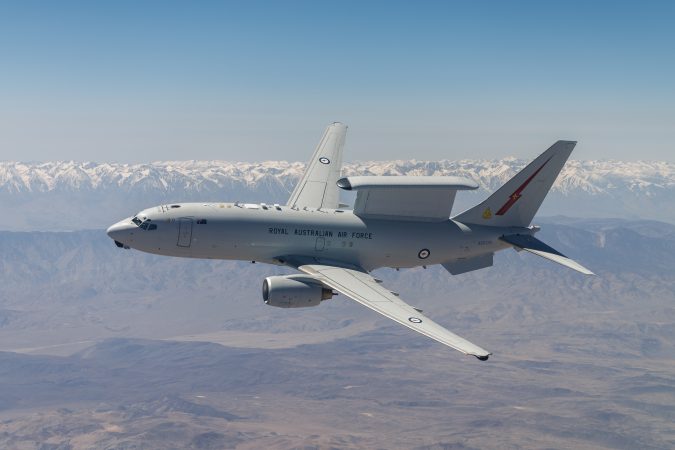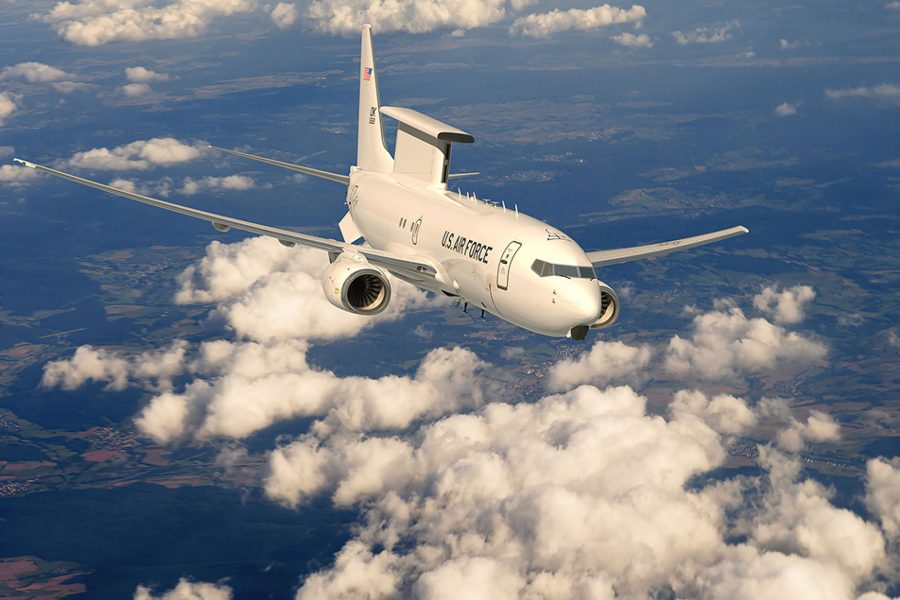The future of the Air Force’s acquisition of 26 Boeing E-7 Wedgetail aircraft is in doubt under spending plans that are being weighed by the Trump administration, people familiar with the matter said.
The E-7s are to be the Air Force’s new battle management platform, providing airborne moving target indication (AMTI) as successors to the decades-old E-3 Sentry AWACS aircraft.
Those in favor of cutting the buy argue that space-based assets can do the job. But the Air Force leadership has argued for years that E-7 is needed, including testimony as recent as this month.
“We have to do more than just sense,” Air Force Chief of Staff Gen. David W. Allvin told the House Appropriations subcommittee on defense May 6. “We have to sense, make sense, and act. And right now, the E-7 is the platform that delivers what the E-3 can with greater capability. But I think we just need to ensure that we’re adequately covering all parts of that as we do that migration, before we just go from one domain to another specifically.”
An Air Force spokesperson declined to comment on the fate of the E-7 in the yet-to-be-released 2026 budget. In most years, the budget would have been released months ago. But with a change in administrations and the Trump administration trying to make major changes in a hurry, the proposed budget is still weeks away.
The E-7 Wedgetail aircraft are pricey. Although the basic system has been in use by the British and Australian air forces for years, the Air Force wanted additional capability. The first two prototypes, which won’t be delivered until fiscal 2028, are being developed under a $2.56 billion contract.
Boeing expects first flights of the prototype aircraft “in the coming months,” a Boeing spokesperson said. “We look forward to supporting the U.S. Air Force on the long-term evolution of the platform capabilities and fleet mission.”
Lawmakers are watching closely for signals from meetings between the Pentagon and White House Office of Management and Budget.
“We know there’s a discussion going on between OMB and the Air Force about these things,” House Appropriations Committee Chairman Rep. Tom Cole (R-Okla.) said in an interview with Air & Space Forces Magazine. “At the end of the day, I tend to have more faith in the Air Force that has to go fight and win the war than I do in another bureaucracy.”
Cole toured an Australian E-7 at Joint Base Andrews, Md., on May 12 and discussed the platform with senior Air Force officials, including then-Acting Air Force Secretary Gary Ashworth and Air Force deputy chief of staff for plans and programs Lt. Gen. David Tabor, and other senior service officials, according to a person familiar with the meeting.

“This is a capability that our Air Force tells us we need, particularly given how rapidly the E-3s are leaving the fleet,” said Cole, whose district includes Tinker Air Force Base, home to the E-3 fleet. “Nobody tells me we’re ready to transfer this capability into space. Eventually, we get it in space, we think, but you’ve got to worry about the here and now.”
President Donald Trump and Secretary of Defense Pete Hegseth vowed in April to spend $1 trillion on the U.S. military in 2026. But since then, it has become clear that the budget spending request will actually be far less, about $893 billion, and that the White House is counting on Congressional add-ons to make up the balance.
“I’m concerned about everything until I see a full budget,” Cole said. “We’re going to take very seriously whatever the administration proposes, but that doesn’t mean it’s automatic. We’re not going to lose this ability.”
The Space Force is working toward a future space-based moving-target indication capability, but officials say it will not be able to absorb the E-7’s missions in the near future.
“Space offers a lot of advantages, particularly in a contested environment, but it isn’t necessarily optimized for the full spectrum of operations that your military is going to be asked to do,” said Chief of Space Operations Gen. B. Chance Saltzman during the hearing. “No one system is going to be perfectly optimized to take care of the full spectrum of ops. And so that’s where I think you need a mix of systems.”


